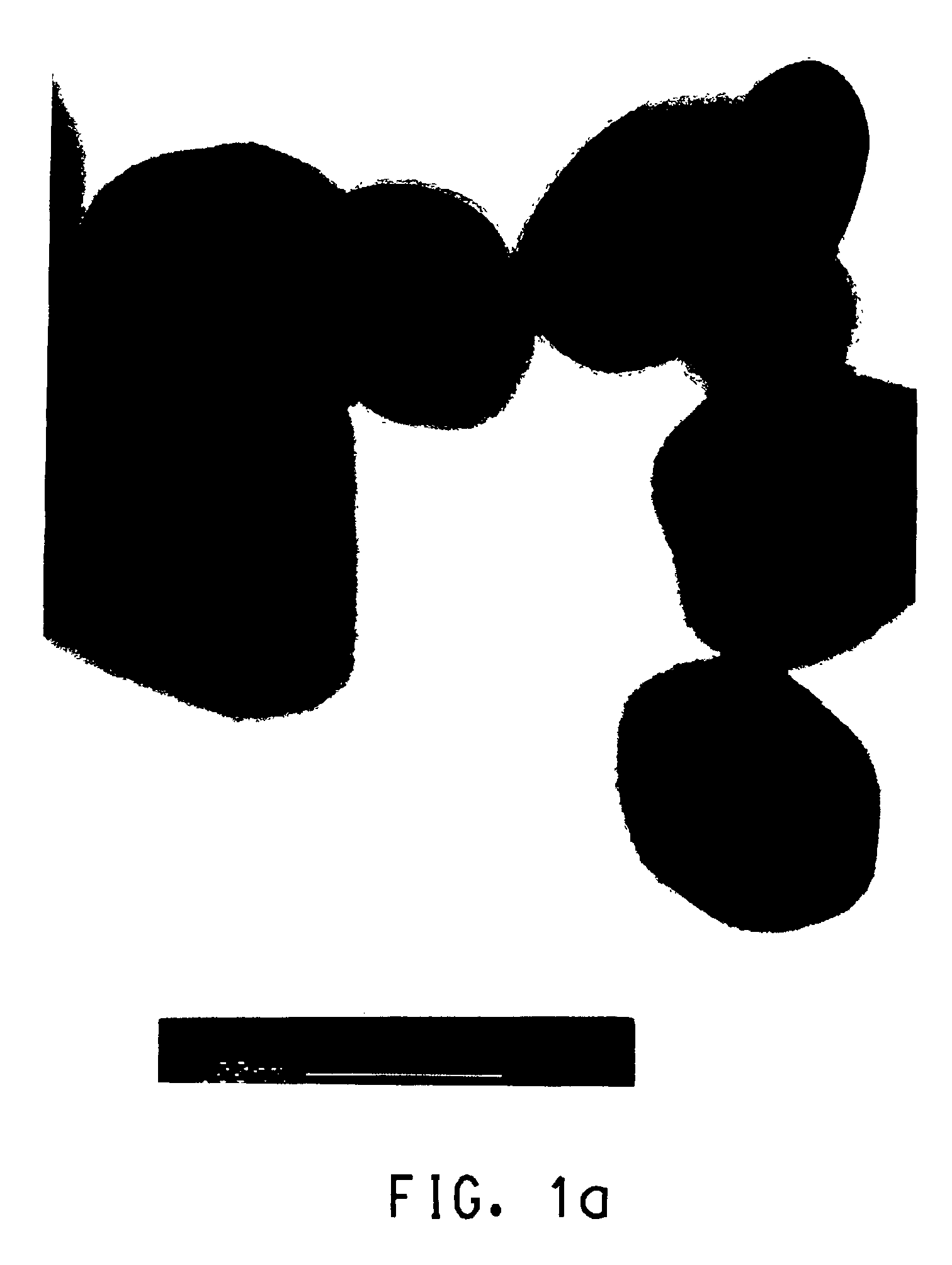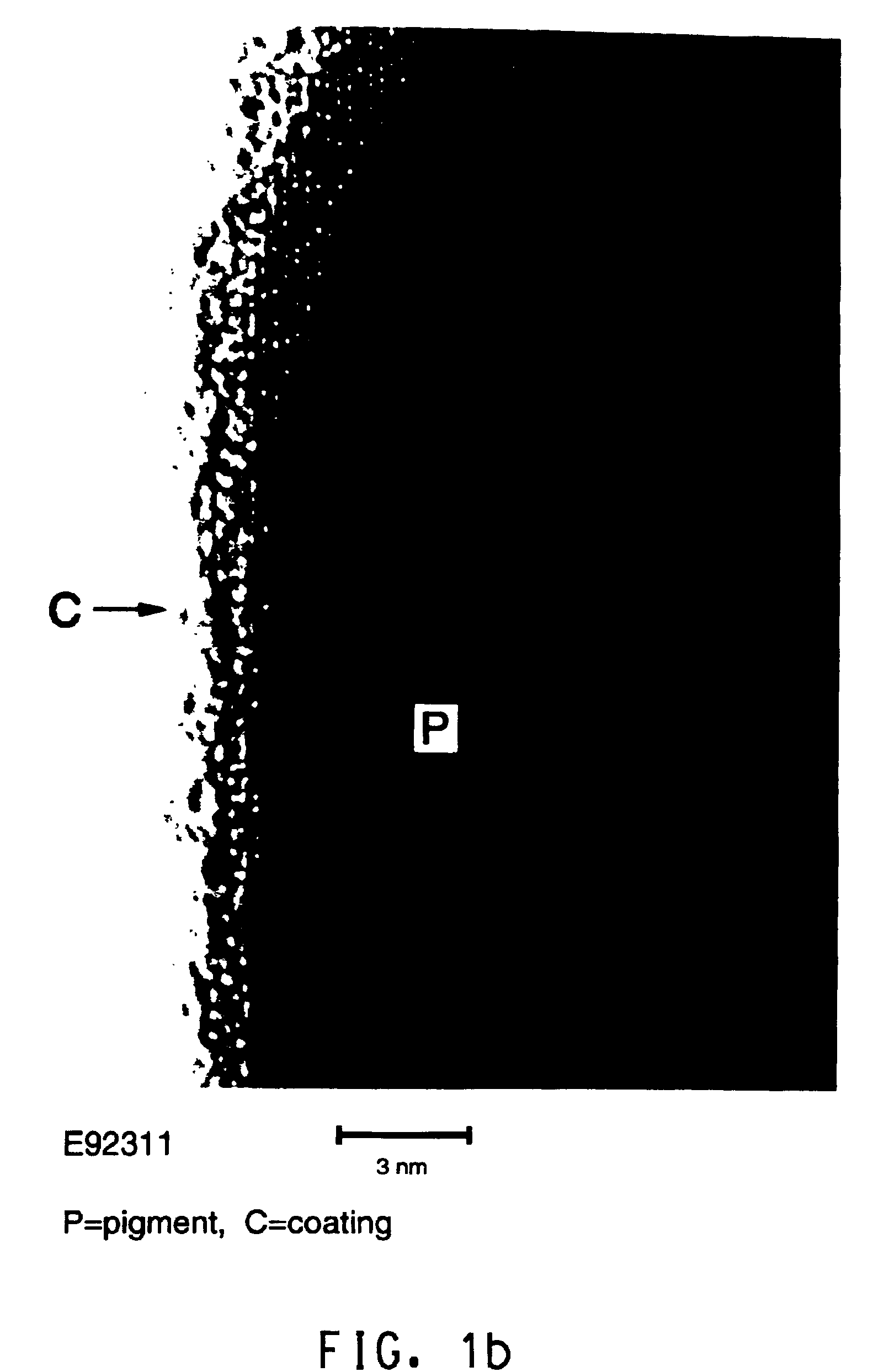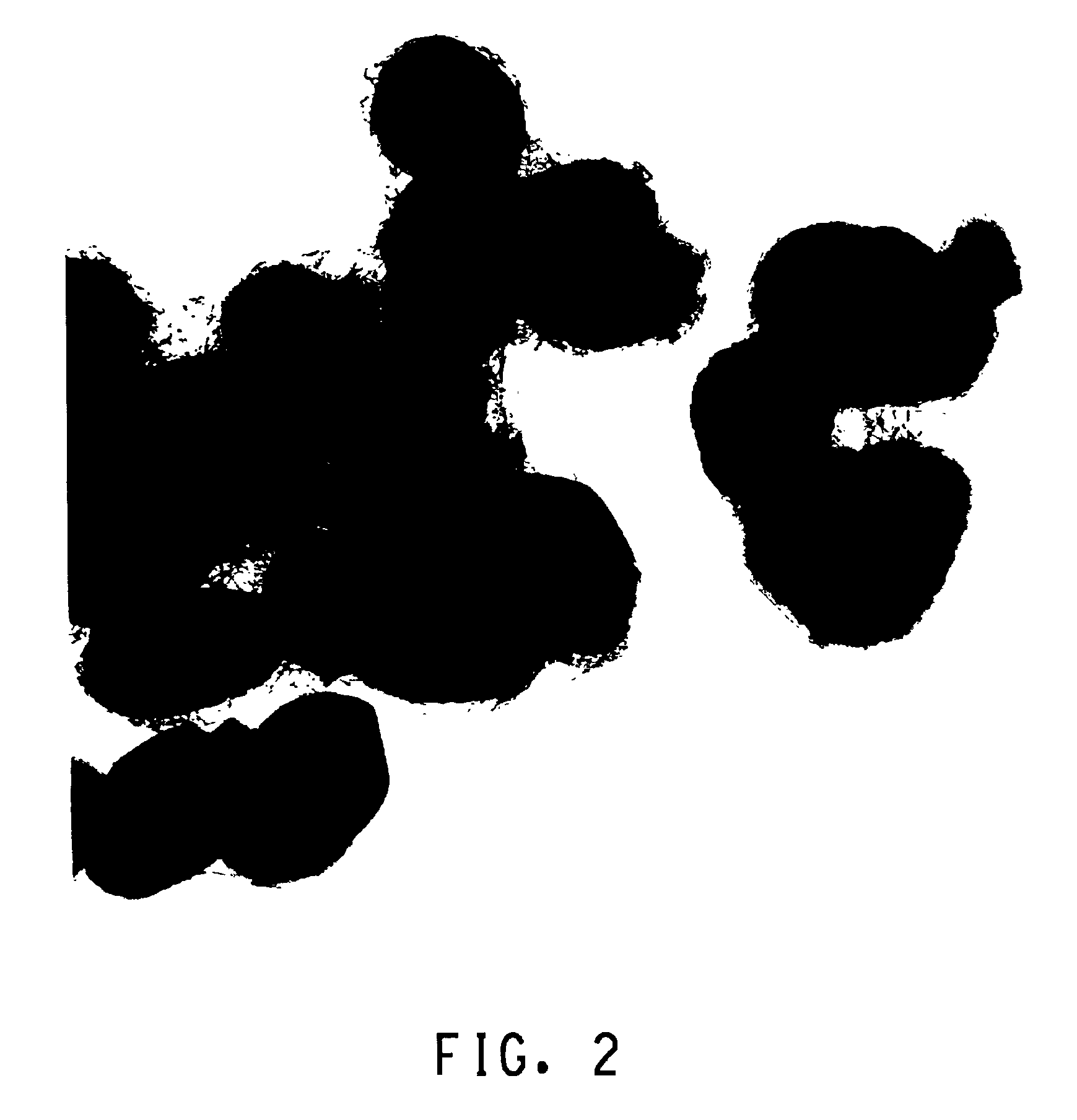Process for making durable rutile titanium dioxide pigment by vapor phase deposition of surface treatments
a technology of titanium dioxide pigment and surface treatment, which is applied in the direction of titanium dioxide, chemistry apparatus and processes, titanium compounds, etc., can solve the problem of unreacted silicon tetrachloride in the produ
- Summary
- Abstract
- Description
- Claims
- Application Information
AI Technical Summary
Benefits of technology
Problems solved by technology
Method used
Image
Examples
example
Titanium tetrachloride was pre-mixed with aluminum trichloride (chloride mix) and fed to the oxidation reactor. The amount of aluminum trichloride in the mixture was sufficient to provide about 1 wt % aluminum oxide based on total solids formed in the oxidation reactor.
The chloride mix was evaporated and pre-heated to about 450° C. and introduced into the reaction zone. Simultaneous with the introduction of the chloride mix, pre-heated oxygen (where the total excess oxygen was about 14 mole %) was continually introduced through a separate inlet adjacent to the chloride mix inlet. Trace amounts of KCl dissolved in water was added to the oxygen stream as disclosed in British Patent 922,671 and U.S. Pat. No. 3,202,866. The Cl2 / TiCl4 mole ratio in the feed was 1:1.
Reaction temperature where the chloride mix contacted the oxygen was about 1550° C. Silicon tetrachloride was added as a dispersed liquid down stream from where the chlorides mix and the oxygen streams were initially contacted...
PUM
| Property | Measurement | Unit |
|---|---|---|
| temperature | aaaaa | aaaaa |
| particle size | aaaaa | aaaaa |
| temperature | aaaaa | aaaaa |
Abstract
Description
Claims
Application Information
 Login to View More
Login to View More - R&D
- Intellectual Property
- Life Sciences
- Materials
- Tech Scout
- Unparalleled Data Quality
- Higher Quality Content
- 60% Fewer Hallucinations
Browse by: Latest US Patents, China's latest patents, Technical Efficacy Thesaurus, Application Domain, Technology Topic, Popular Technical Reports.
© 2025 PatSnap. All rights reserved.Legal|Privacy policy|Modern Slavery Act Transparency Statement|Sitemap|About US| Contact US: help@patsnap.com



